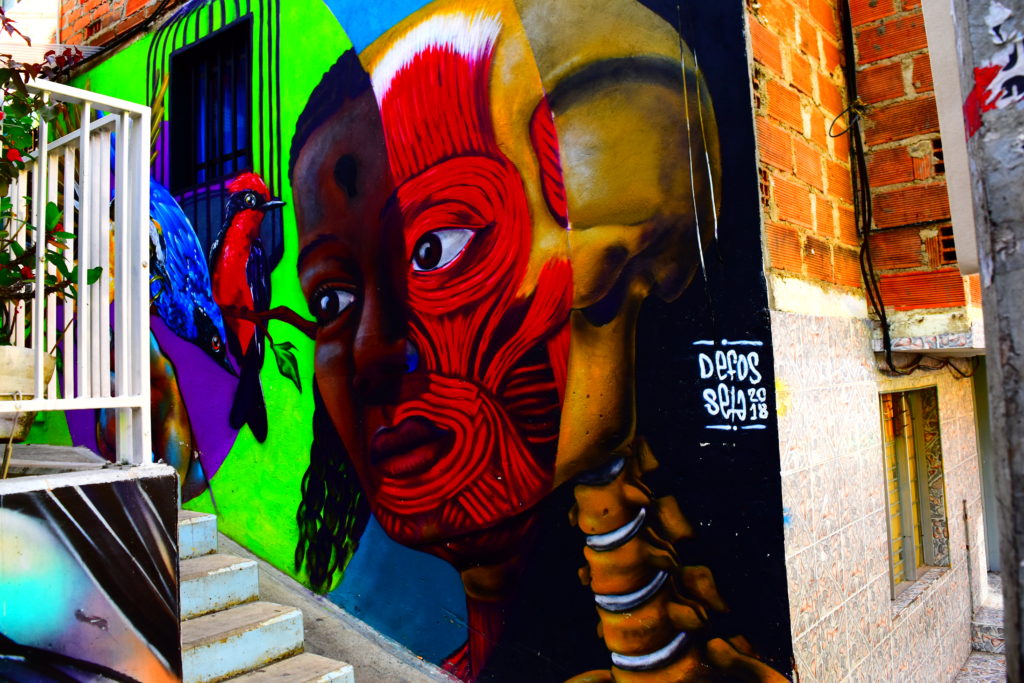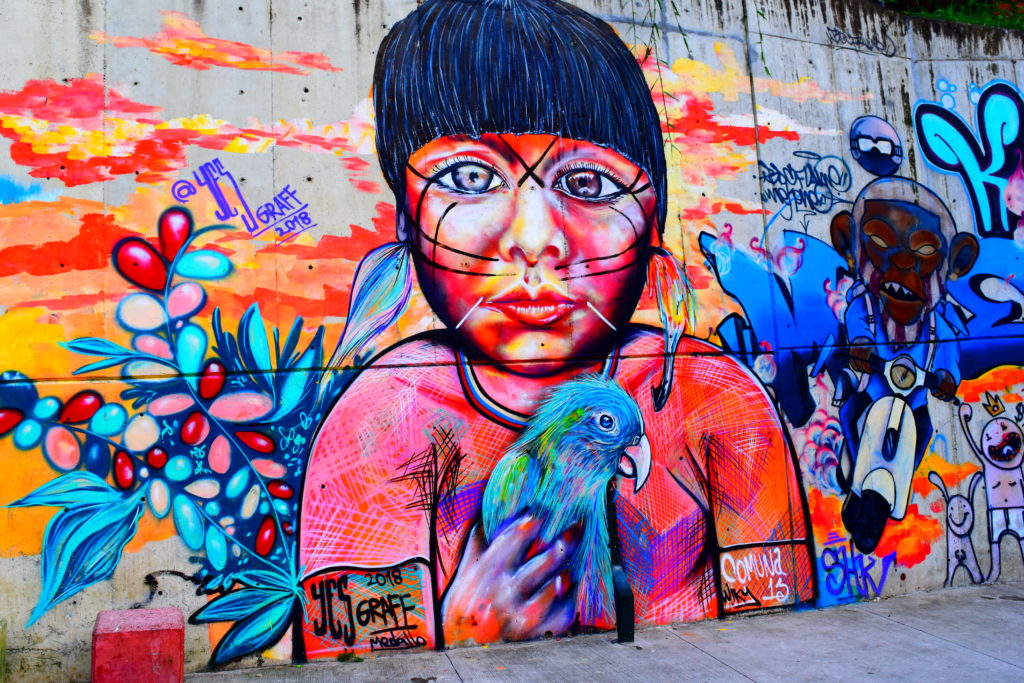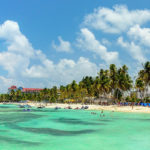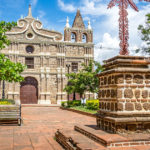Ever since I first arrived in Medellin in 2015, I had always been fascinated by city’s past and the stories of violence and strife that once plagued this city. History, especially history within my lifetime, has always been of interest to me.
I recently went to Comuna 13, once labeled the most dangerous neighborhood in Medellin, Colombia due to it’s extremely high homicide rate. Located on the side of a mountain in the San Javier area, this neighborhood was once a center for paramilitary, guerrilla and gang activity due to its ideal location for moving drugs and anything else in and out of the city.
It’s since undergone a dramatic transformation due to innovative urban regeneration, street art, and community solidarity. In order to fully understand the history and troubles that have plagued the area and its subsequent reformation, it’s best to explore the area with a local guide. I’d recommend Medellin City Services, as their knowledge of the history of this neighborhood and the artists offer an unparalleled experience.
A Brief History of Comuna 13
In the 1980s and 1990s, the neighborhood was run by groups loyal to Pablo Escobar as well as rebel guerrillas groups including the FARC and ELN. In October 2002, the Colombian military and police carried out a huge operation to overthrow all the rebel groups in Comuna 13. At the time, the Comuna had about 100,000 residents. During this operation, nine people were killed, including three children, while many others, including civilians, were injured.
The left-wing guerrillas groups were ultimately eliminated or expelled from the Comuna, however, the right-wing guerrilla groups soon took over. Things calmed down but were not what anyone would describe as ideal.
The youth and the community in the neighborhood took action, and rather than falling into the gang life, many focused their energy in the form of art and community events. Music, especially hip hop, and graffiti became a way for the youth to express themselves.
The violence slowed but, while the youth rebelled, many of the gangs still held their ground. The violence and killings continued and as recently of 2010, Comuna 13 was still the most violent neighborhood in Medellin.
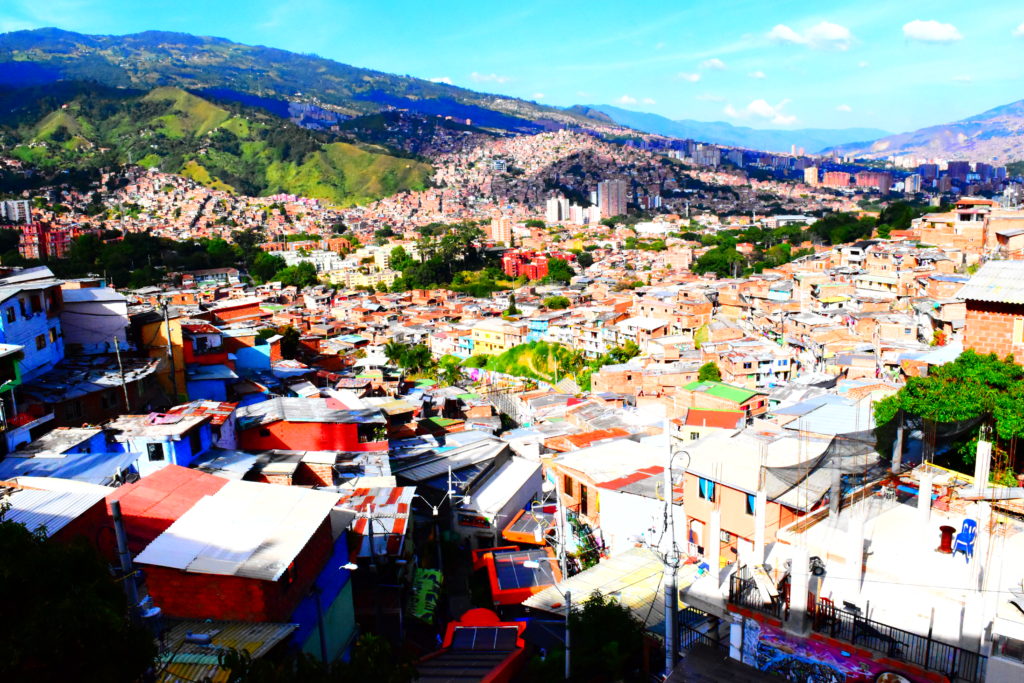
Comuna 13 Today
After many years of neglect, a substantial amount of money was invested to improve the quality of life of the inhabitants in Comuna 13. Due to the investments in accessibility an other urban innovations, residents quality of life has drastically changed for the better for the inhabitants of Comuna 13 and the neighborhood has transformed itself.
As I walked through the community, I saw several kids playing in the streets and alleyways, hip hop artists and witnessed a dance performance. Tourist had come from all over the world to view the artwork and the outdoor escalators, a testament to the change the neighborhood has undergone. The neighborhood also offers stunning views of the community and the city below.
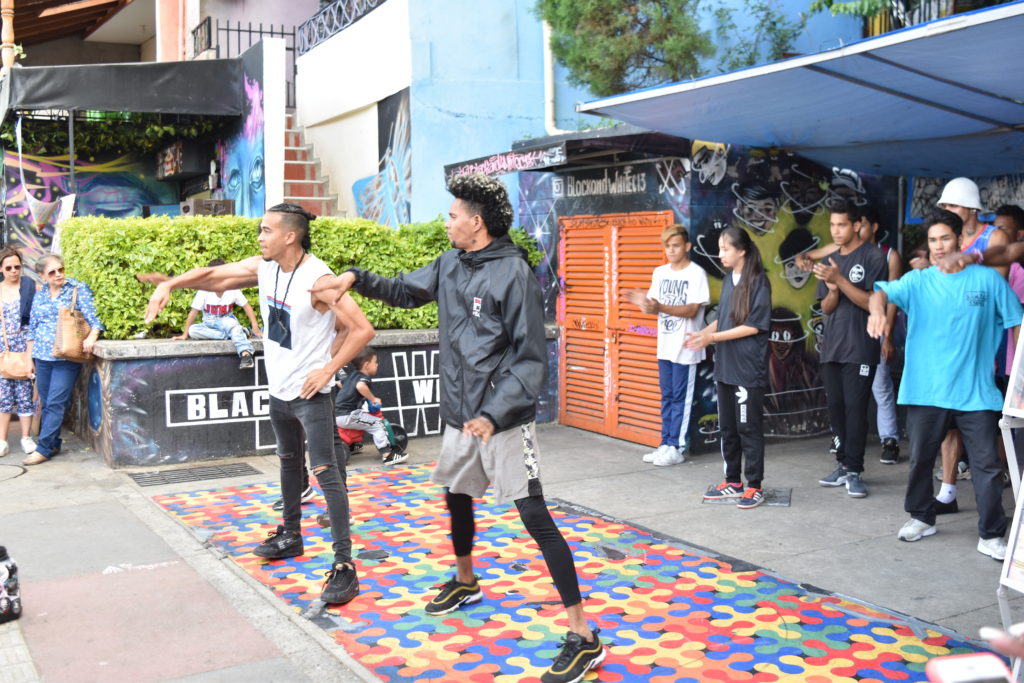
The people of Comuna 13 are very welcoming and excited to see their neighborhood continue to grow into a positive place. Inhabitants and tourist alike walked the streets and I never once felt unsafe. Although gangs still rule the area, there is a police presence and a relative calm as you move through the community. This positive energy is felt as you walk through the community and talk with residents and vendors.
Graffiti
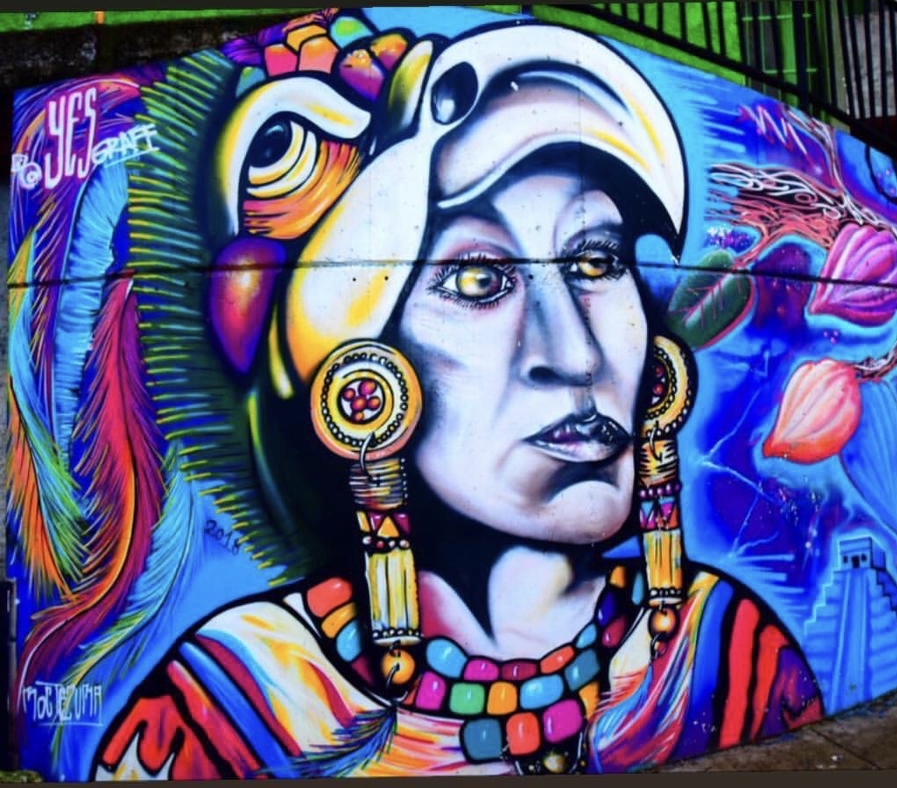
The graffiti throughout the community have become a canvas to tell the colorful story of the community’s difficult past, as well as, hope for a peaceful and prosperous future. The art and music you will encounter in this community have been used as a means of expressing discontent with the violence that occurred in the community.
The benefit of doing the tour with Medellin City Services is that they were able to tell us the story behind much of the artwork. Artists hailed from all over the world, some even from Comuna 13 itself. Check out some of the artwork below.
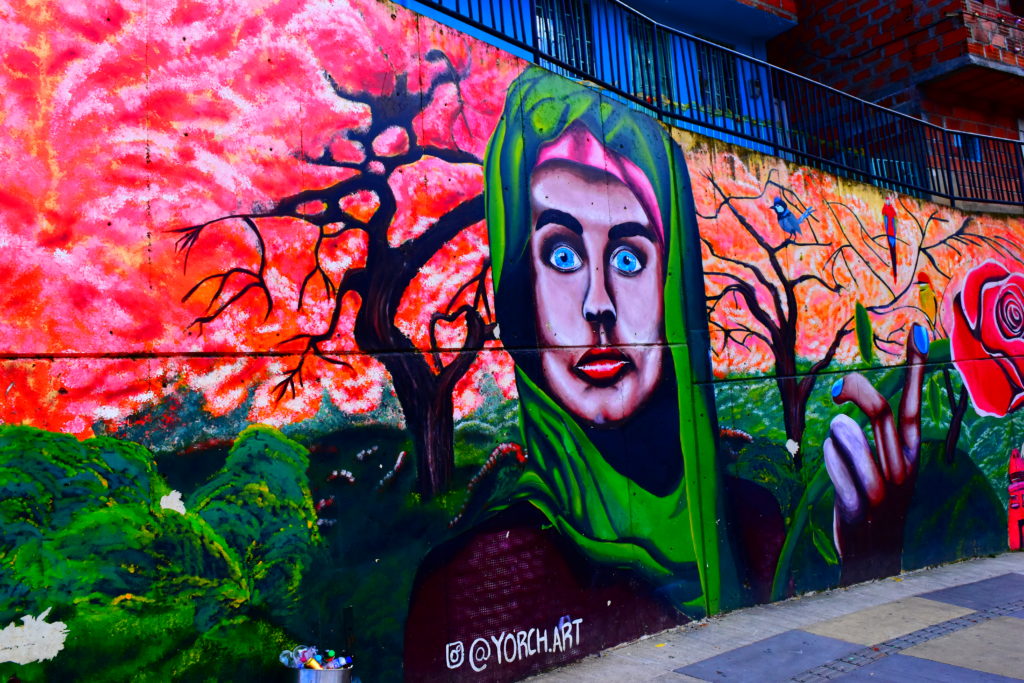
Electric Outdoor Escalators
The electric escalators were constructed in 2011 and are one of the icons of the rebirth of Medellin. These outdoor escalators were built to connect and provide access to many of the homes that were isolated from their neighbors and the city below.
Prior to construction of the escalators, residents had a tumultuous climb of 350 steep steps of 1259 feet, which took about 25 minutes. Now the trip can be done in as little as 6 minutes.
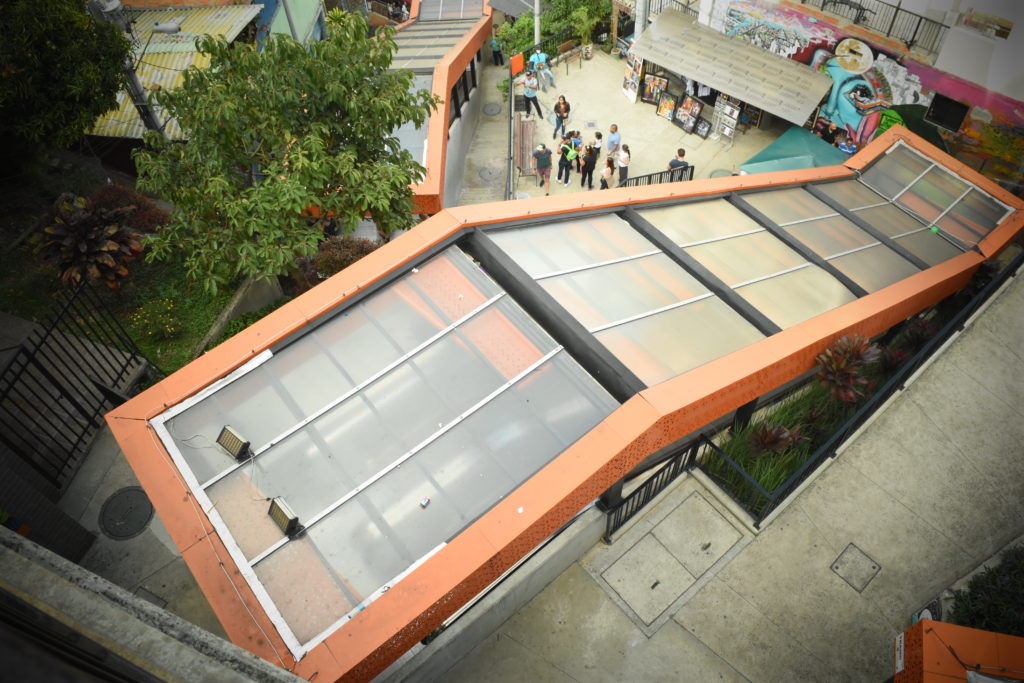
How To Visit Comuna 13
As mentioned, it’s best to have a guide to give you the complete perspective of everything you’re seeing in Comuna 13. While many companies offer this tour, I recommend Medellin City Services due to their in depth knowledge, ease of booking, and flexibility.
A visit to this community is definitely well worth it if you’re in Medellin. It provides an authentic feel that you may not get by staying in the otherwise affluent and touristy areas of Medellin. It also provided me not only the in depth history lesson that I was looking for, but allowed me to see how art and dance are woven into its history and subsequent revitalization.
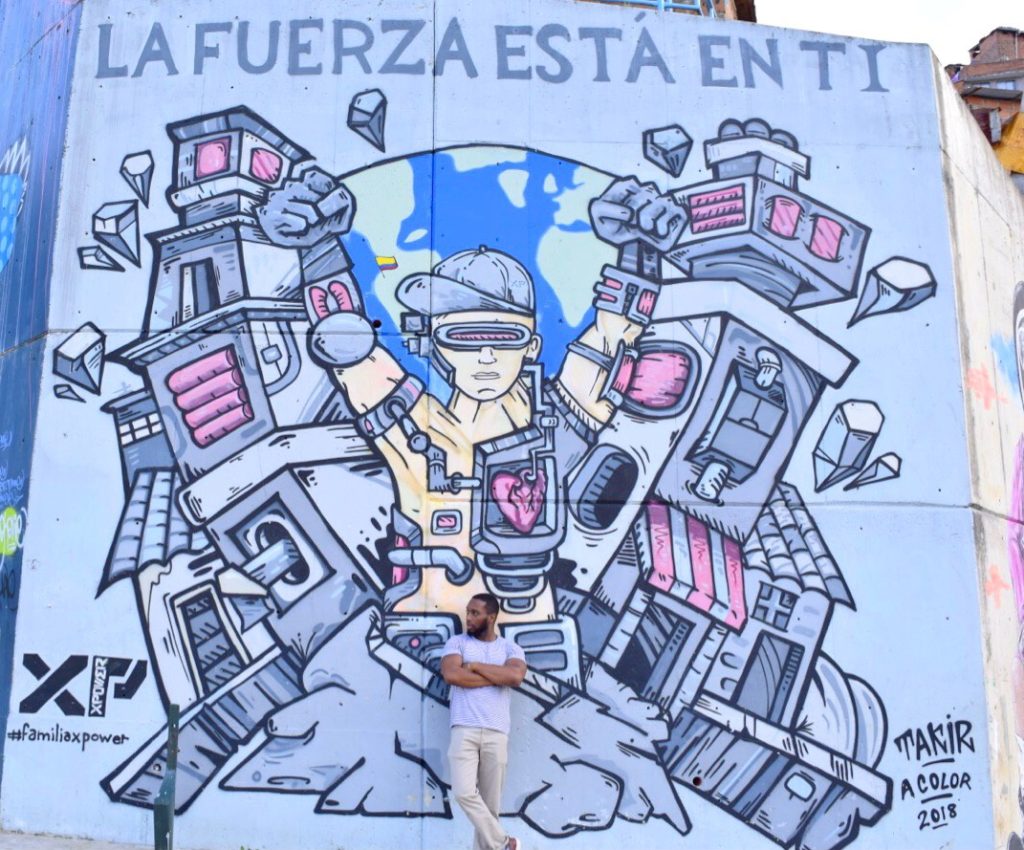

Geron is an avid traveler, entreprenuer and mens style aficionado. He love’s mac and cheese, getting discounts, his momma, and a good whiskey, not particularly in that order. It’s alleged he lives in Miami, but no one really knows anymore.
Follow him on instagram at @geronp
